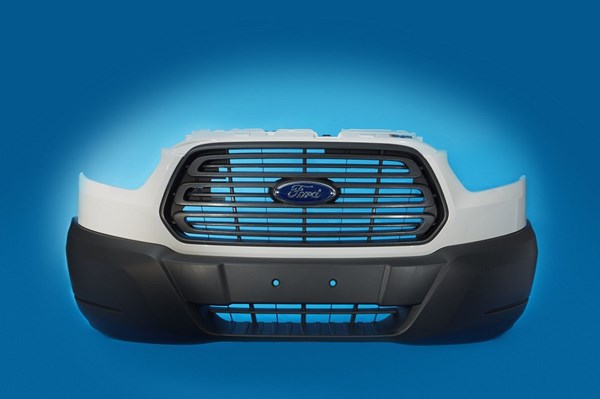Interesting Finalists of 2016 SPE Auto Innovation Awards
Take a look at these “runner-up” finalists in exterior, interior and chassis/hardware categories.
Take a look at these “runner-up” finalists in exterior, interior and chassis/hardware categories.
In two recent separate blogs (here and here) highlighting the award winners in nine categories of the 2016 SPE Automotive Innovation Awards, I noted that I would also highlight some of the finalists of certain categories that were particularly exceptional. Here are four such examples from the categories of body exterior, body interior, and chassis/hardware.
Exterior Body: Mold-In-Color (MIC) High-Gloss Body Color TPO Fascia. This component is featured on Ford’s 2017 Transit Connect and involved Advanced Composites’s ADX70004WFA TPO. Injection molded by Magna Exteriors, this MIC TPO fascia underwent rigorous testing to assure the material was resistant to stone pecking and road chemicals and would not change shape when exposed to high heat. Also used was a lens-grade mold with SP1 diamond polish and gating designed to minimize knitlines. The resulting fascia is a high-gloss, weather- and mar-resistant component. Moreover, it is 10% lighter, offers $800,000 annualized savings, and harmonizes with exterior painted components.

Interior Body: Thin-Wall Instrument Panel (IP) Substrate. Appearing on the Ford’s 2017 Lincoln Continental, this component is reportedly the thinnest full-size, deep-draw injection-molded IP in North America at 1.9 mm/0.07 in. A 30% glass-reinforced LFT-PP—Stamax 30YK270E, from SABIC was used and injection molded by Faurecia Interior Systems.
Compared to the 2.4 mm/0.009 in. microcellular foam-molded benchmark, this design is 14% lighter, saves over $1 in material cost as well as the microcellular-foaming investment, and helps optimize packaging. Moldfilling analysis with fiber orientation was used for accurate warpage predictions and to develop tooling countermeasures to facilitate part molding.

Chassis/Hardware: Rear Differential Cross-Member. This component appears on Daimler AG’s 2016 Mercedes S-Class and is said to be the first application where a nylon/glass composite has been used as a cross-member to support the rear differential and complete the rear cradle of a vehicle. BASF’s Ultramid A3WG10CR, a 50% glass-reinforced nylon 66 was used for the component which was injection molded by ContiTech North America. The material has been optimized for dynamic loads and is controlled with tighter production specs.
By replacing traditional parts in steel or aluminum, the injection-molded glass-reinforced nylon 66 design offers parts integration opportunities, is cost neutral, reduces noise transmission from the driveshaft, and reduces mass 25%, helping improve fuel economy and reduce tailpipe emissions.

Related Content
-
ICIS Launches: Ask ICIS Generative AI Commodities Assistant
Said to be the first of its kind, this AI assistant will enhance access to ICIS’ intelligence and insights for the energy and chemical markets.
-
What is the Allowable Moisture Content in Nylons? It Depends (Part 1)
A lot of the nylon that is processed is filled or reinforced, but the data sheets generally don’t account for this, making drying recommendations confusing. Here’s what you need to know.
-
What's the Allowable Moisture Content in Nylons? It Depends: Part 2
Operating within guidelines from material suppliers can produce levels of polymer degradation. Get around it with better control over either the temperature of the melt or the barrel residence time.















